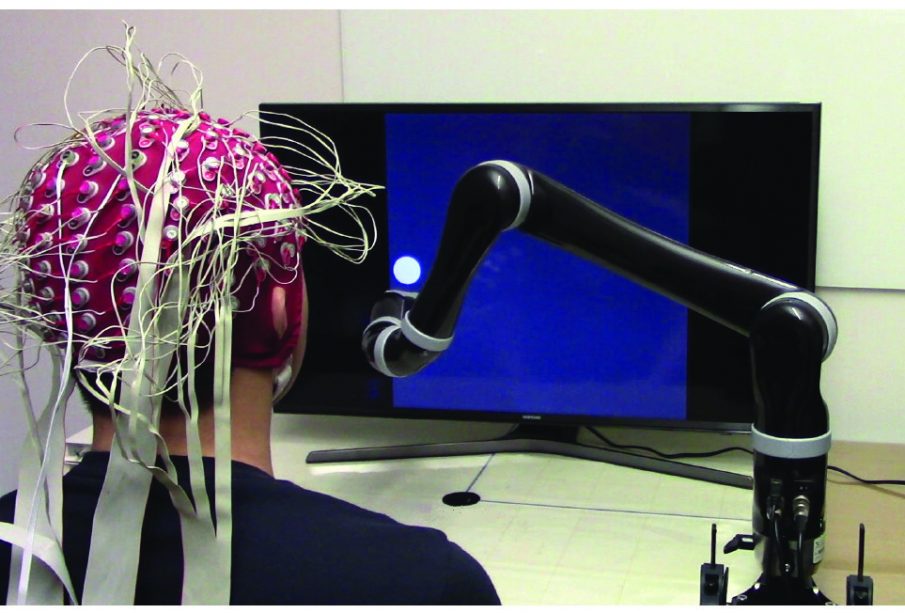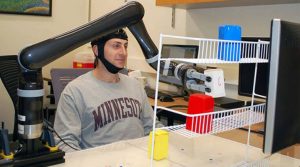
The Halting Progress Of Mind-controlled Robot Tech
There are many challenges to get over, but technology that will allow quadriplegics to use their ideas to operate robotic limbs is on the distant horizon. A beginning innovator in this perform, quadriplegic Jan Scheunemann, has knowledgeable the excitement of managing physical movements with her thoughts. However, she also knowledgeable the loss of that capability — the alerts worsened eventually. Jan Scheunemann, a quadriplegic, this year was able to use her ideas to bend the hand of a new mind-controlled automatic arm in a venture run by the University Of Pittsburgh School Of Medicine. Scheunemann a few several weeks ago confirmed her capability to use her ideas to shift the software part into different roles while managing the hand and arm. However, the college lately shut down the venture.

What Scheunemann Achieved
Scheunemann could create four unique movements with the automatic arm’s hand: hand abduction, or growing out the fingers; information, in which the last fingertips snuggle in; thumbs resistance, which includes the thumbs shifting out from the palm; and grabbing the thumbs, catalog and center fingertips together. Mastering these four movements provided Scheunemann management of the part in 10 measurements. We wish that this technology will be easy for use at home,” mature detective Jennifer Clinger, associate lecturer of actual medicine and recovery at Pittsburgh U., informed Tech News World. “That might take another five or 10 years”.
The Experiment
In two electrode plants with 96 get in touch with factors each were inserted in Scheunemann’s engine cortex, which manages non-reflex activity. Wires operating through two slots in her head connected them to a pc when she was installed to the arm. Each electrode grabbed alerts from one neuron. Brain alerts produced by Scheunemann while viewing animated graphics and visualizing the movements were documented and fed into the pc to recognize the shooting styles associated with particular noticed or thought movements. Within per 7 days, Scheunemann could achieve in and out, remaining and right, and up and down with the arm, providing her three-dimensional management. Within three several weeks, she included bending the hand returning and forth; shifting it from part to side; spinning it clockwise and counter-clockwise, and grasping things, to give her management in seven measurements. The arm was designed by Johns Hopkins Used Science Lab.
Back to Reality
The plants were operatively eliminated from Scheunemann’s head in Oct. “This was a research to see whether the technology could perform,” Collinger said, “and from the starting, it was organized to be of a restricted length”. Deterioration of the alerts could be one reason for the restriction. The improvements noted less alerts eventually — partially because the mind is a aggressive atmosphere for electronic gadgets, and partially because small movements of the plants may develop up scars, according to the MIT Technology Evaluation. Scheunemann obviously had missing the capability to create the hand’s thumbs and fingertips, and was able to management the arm only in three to five measurements by the venture’s summary. “She is constantly on the have quadriplegia,” Dollinger said. “The plants did not recover activity of her divisions”.
Progress and Pitfalls
The U.S. Food and Medication Management accepted the “Luke” prosthetic arm in May. Then there’s the Brownish University-directed Briante 2 project: One individual this year used her thoughts to get a software arm to bring her java. However, the technology is “very complicated and expensive” and needs to be qualified to the needs of each customer, said Venkat Rajang, major specialist for innovative medical technology at Snow & Sullivan. There is no way of huge generating gadgets that would fulfill all users’ needs. Another barrier is that the technology “would need to be wi-fi, resilient and easy to set up on a regular foundation,” Collinger said.
The hands currently in use don’t fulfill those specifications.
Still, the idea of automatic hands “has been around for a while, and some of the other technology around it are getting better,” Rajan outlined, “so you might get the right idea at the perfect time with the available resources cheaply to get it done”.







